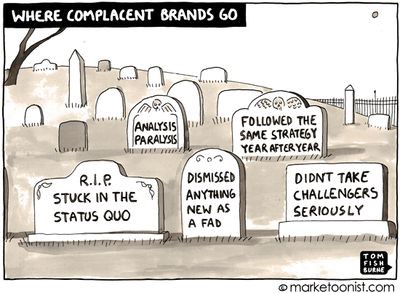Innovate or Die

While a first mover advantage with a product or service may give a company a head start, it is what one does with that advantage that will determine whether it can be sustained. Speed of market penetration and proliferation from a fast follower, especially one that introduces new innovation, could potentially surge past the first mover. An example would be in the smartphone industry. The Blackberry could be considered one of the first smartphones, and in 2009 it had risen to represent nearly 20% of global smartphone shipments. When Apple introduced the iPhone in 2007 it shook up the industry with bold features such as a full touchscreen interface (with no tactile keyboard) and a year later with the App Store which opened up the flood gates for further increasing the utility of the device by allowing third party developers the opportunity to introduce new games, productivity applications, and communication mediums, to just name a few categories. An entire and robust ecosystem was built around the iPhone in just a few short years. In less than 5 years after the iPhone was introduced, Blackberry market share dropped to less than 5% and in 2016, the maker of the Blackberry abandoned making its own devices altogether. Conversely, the iPhone now represents 15% of global smartphone shipments and Apple is arguably considered the technology innovator in the smartphone industry when just ten years ago the closest thing Apple had to a mobile device was its MP3 player, the iPod.
The lesson learned? You just never know where competition can come from.
Never be complacent, always be innovating.

